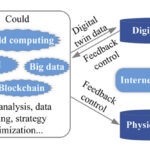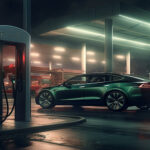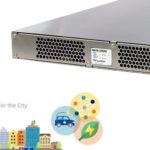A concept may be elegant and even possible to implement, but the actual benefits are dubious — especially with the stress it gives to users.
You’re probably somewhat familiar with the idea of vehicle-to-grid (V2G) automobile energy transfer. It’s been a “hot” topic for the last few years, largely due to the increase in the number of pure electric vehicles and plug-in hybrid vehicles on the road. In the US, these EV/HEVs account for roughly 8 to 10 percent of all new cars sold (but are a much lower fraction of all cars, of course).
What is V2G? In short, V2G enables the energy stored in car battery packs to become a part of the grid, using some percent of each battery’s energy storage capacity to meet grid-level peak demand (Figure 1).

Since energy storage is one of the bigger challenges facing efficient and environmentally friendly energy generation and distribution, using cars for transitional storage of any excess energy can minimize the need to build new generating capacity. It can also help create a more resilient grid, in principle.
The premise of V2G is that many car owners usually use only a fraction of their battery capacity, so V2G lets them offer more “use” of their cars as battery energy storage systems (BESS). Vehicle owners who send their unneeded energy back to the grid get some payment.
I’m not going to delve into the operational details of the proposed V2G operation, as that information is widely available. The idea is simple in concept: a car is connected to a home charger when not in use and so can either recharge or allow its “excess” stored energy, which is temporarily unneeded, to be transferred back to the grid.
This capability would be especially useful to bolster the grid when its capacity is low compared to demand. In operation, power would flow from the grid to the car or vice versa, depending on the supply/demand balance and energy pricing at that moment.
In engineering and economic terms, everything will be optimized: supply, demand, pricing, costs…you name it. So, what’s not to like?
Sounds good so far…but there are “issues”
Despite all the presumed benefits, there are problems associated with V2G beginning with the charging hardware and technology. I suspect they will be worked out in a reasonable time, as vehicles increasingly come with chargers that are “bidirectional” and so can transfer power from the grid to the battery and easily switch do the reverse as well. Further, the higher-level management of the grid, power flows, supply/demand, pricing, monitoring, and other issues certainly are complicated, but let’s assume that gets worked out as well at some point.
It’s the implications of V2G that have me skeptical. The good news is it distributes energy storage, at least to a modest extent. That’s generally good for system resiliency, reliability, and integrity, at least in principle. V2G works on the premise that many cars and drivers will use only a fraction of their battery capacity most of the time; this approach optimizes battery utilization to get more out of the same components — that’s also a virtue.
The bad news is that your vehicle is now part of a bigger, much more complicated system. with all the idiosyncrasies, baggage, and issues that it brings. The simple act of hopping in the car for a short, medium, or longer drive now involves a simple “was there enough charge last time I parked it?” You may have to check if perhaps your battery pack was drained a little too much while it was parked and connected.
Going somewhere may become more complicated, as your needs will have to be synced with what the grid “master” says. Will you need to file the equivalent of a flight plan or consult your personal travel-charge app before going out and do so some hours in advance? What if the V2G oversight software decides, rightly or not, that it needs your battery’s energy right more than you do? Or perhaps a bug or misunderstanding between your vehicle’s battery management system (BMS) and the sophisticated V2G management software says, “You’re already good to go, no more power for you,” when you actually are not?
There’s another “oops” factor: V2G proponents make the implicit assumption that all these EVs/HEVs are parked in the owner’s driveway or garage when not in use and hooked up to their personal charger. Yet at the same time, many owners may not have an assured private parking arrangement.
Further, there are purely technical concerns. No one knows yet what those V2G-initiated moderate charge/discharge cycles will do to the life of the car battery pack. Experts suspect that it’s not good and may shorten the battery life anywhere from slightly to moderately. It depends on many variables, such as battery chemistry and construction, along with cycling specifics.
Finally, every time you transfer energy from a source to a load, there will be inefficiencies and power losses, and these add up. In fact, those losses can soon negate any system-level benefits you were expecting to see.
Reality hits, but how?
Will car owners be willing to give up their hard-earned battery charge for a few dollars and the “greater good,” especially if it may leave them out of juice when they suddenly need it? Will people accept adding yet another complication to their lives for what had previously been a simple task? Will they need to invoke an AI-driven app on their phone to figure out if they can make a quick, unplanned afternoon trip to visit a friend 50 miles away?
I suspect that a few will go along with the V2G scheme, but many won’t, as it’s just not worth the headache, complexity, and risk for such a modest benefit. Proponents talk about V2G as if it is 1) inherently a good thing, 2) obviously going to happen, and 3) the only real obstacle is people’s reluctance to be team players. To me, it’s another case where academics and engineers posit a wonderful global solution without being sensitive to the reality “on the ground” of how people live their lives and what their priorities are.
I’ll say this about V2G: it has a snappy name and acronym with the right words, and often that’s a big help in getting upfront attention and stirring up the hype. But when it comes to power and energy, it’s critical to recognize that the laws of physics dictate that there is no free lunch. Saying, “I’ll get my energy from you, and you’ll get yours from me, and we’ll both have what we need,” seems a little too good to be true.
To those who say all the problems can be worked out, I like to keep in mind the maxim to “keep it simple” and the question, “Is the pain worth the gain?” Let’s check back in five or ten years and see how V2G stands.
Related EE World content
Are we ready for Vehicle-To-Grid (V2G) technology?
A quick way to wear out EV batteries: V2G power won’t make sense without smarter grids
How does vehicle-to-grid technology work to improve sustainability?
Bidirectional power for EVs: the practical and creative opportunities using power modules
External references from IEEE Spectrum (and there are many more that can be easily found: V2G is a powerful search engine keyword!)
“False Starts: The Story of Vehicle-to-Grid Power”
“Can plug-in hybrid electric vehicles keep the electric grid stable”
“What V2G Tells Us About EVs and the Grid”







Leave a Reply
You must be logged in to post a comment.